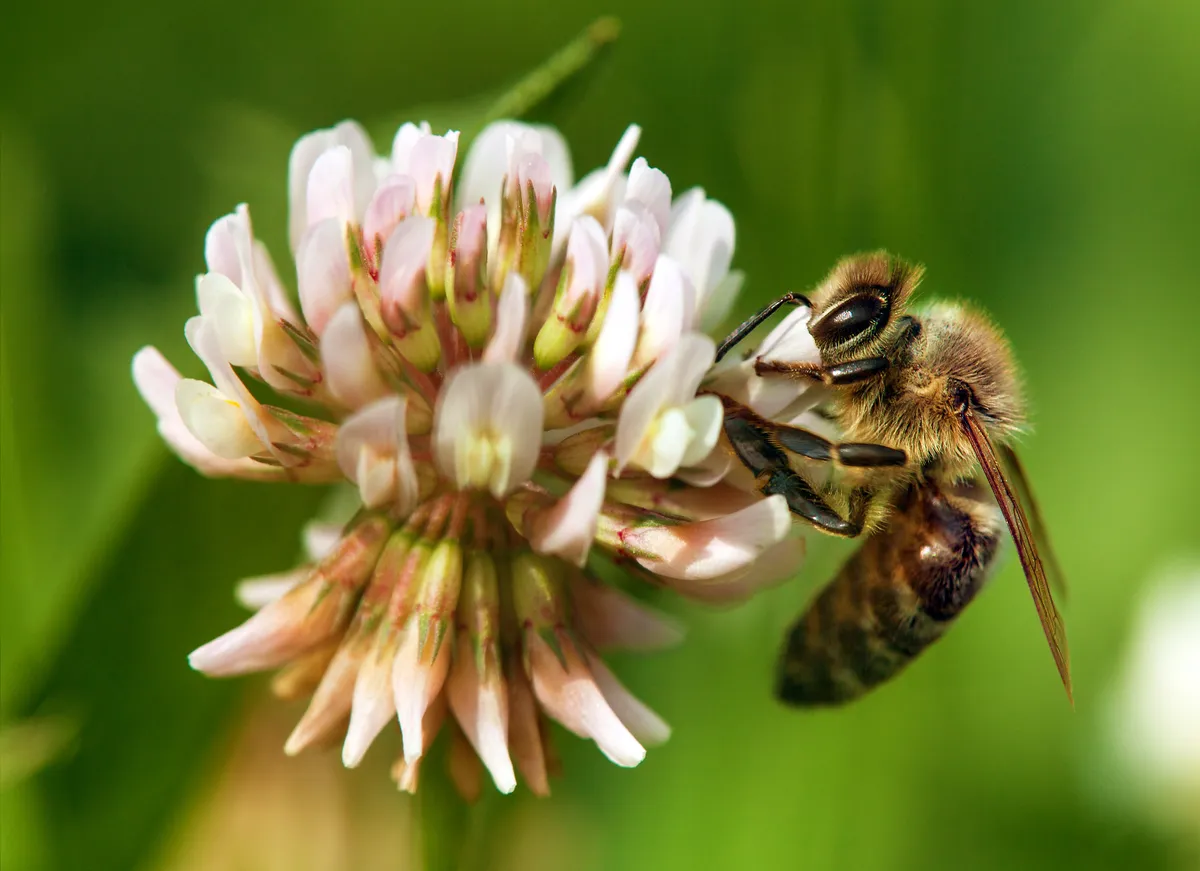Pain is subjective, and although most stings are a real nuisance, there are very few that can stop you eye-wateringly in your tracks, cursing loudly, and gritting your teeth, says Richard Jones.
What is a sting?
A sting is not just a passive jab with a sharp pinpoint; the stiff hollow stinger (or fang) is the carrier to get the liquid venom from a storage reservoir as deep under the skin and into the flesh as the moment allows. There is usually an active pump, either squeezing the bag, or at the base of the hollow sting tube.
Venoms usually contain a cocktail of active ingredients: protein-destroying polypeptide enzymes rupture and destroy flesh cells; histamines increase blood flow, flushing the venom further into the body, causing swelling and redness; and neurotransmitters confuse and over-stimulate nerves creating that stabbing or burning sensation, but also throbbing and numbness. And venom is remarkably toxic. Precise measures are few, but a single wasp sting injects about 15µg of toxin (that’s roughly 1/65,000 of a gram). And it damn well hurts. Multiple stings add pain cumulatively.
What's the point of venom?
In nature venom has two purposes — subduing prey and defence against attack. Thankfully no stinging animal has yet evolved to target humans as potential food, but there are plenty which need their powerful stings to ward us off, because we are a highly dangerous species to them. Others, by a certain evolutionary luck of the draw, have venoms targeted against other organisms, but which nevertheless are highly potent in our rather over-sensitive skins.
Most stings can be brushed aside after a few moments of mild pain, but anaphylactic shock can be fatal. This is an EXTREMELY RARE condition where an individual’s immune response catastrophically over-reacts to the venom injection, leading to a cascade release of the body’s own histamines and other inflammatory chemicals. Untreated it can result in breathlessness, low blood pressure, interference with the heart muscles, and internal bleeding. Similar responses can be induced by peanut and penicillin allergies, and susceptible individuals usually carry an epipen for self-injection of adrenalin to counter the effects.
Bullet ant

A native of the rainforests of Central and South America, the sting of this large (20 mm) ant has been likened to being shot (hence its name bullet ants) or walking over hot coals with a rusty nail driven into your foot. Small colonies of a few hundred individuals use their stings to defend their nests against predators, and also to kill small insect prey items.
- This innocent-looking insect delivers the most painful sting in the world and can leave you in agony for 24 hours or more
- In the Amazon, bullet ants deliver agonising pain to boys as young as 12 – here's why. And can Steve Backshall handle the heat?
Tarantula hawk wasp

The very many species in this wasp family specialise in catching and paralysing spiders to stock the small nest stash where a single egg is laid. The wasp grub then feeds on the still living but unmoving fresh spiders. They often catch and subdue prey much larger than themselves, dragging it back to the nest burrow rather than managing to fly with it, and they have evolved powerful toxins to immobilize the spider which might otherwise fight back dangerously as if its life depended on it.
The very largest tropical and subtropical species have stings just about long enough and tough enough to penetrate human skin and can deliver a painful whack. This usually happens by accident because these are large black or strongly coloured insects, with deeply clouded wings, making them look very sinister — not the type of cute insect you’d willingly pick up between finger and thumb.
Honeybee

Despite being everyone’s favourite insects, honeybees can deliver a very painful sting, and because of the social structure of their colonies, the stings can be multiple and very dangerous. Though evolved from wasps, honeybees now only need their stings for defence — against all manner of animals intent on raiding their honey stores and succulent brood of grubs.
They also defend their hives against unwary humans venturing too close. The first to sting is often killed — brushed off by a quick wipe of the hand, but a barbed stinger means that the needle point, venom sac, and venom delivery apparatus stay attached in the skin, still pumping in the venom. That bee dies, but the lodged sting gives off an alarm pheromone scent which effectively labels you as the enemy.
This recruits more bees to the attack, but as they are killed and disembowelled of their stings more alarm scent is raised and only a rapid exit well away from the hive will stop the onslaught. Ten stings and you might feel breathless and a bit nauseous, you’ll certainly want a sit down and a cup of tea.
A hundred stings and you should seek immediate medical attention. There is no antivenom, but dialysis can remove the toxins before they start to cause organ damage to heart, liver and kidneys. A thousand stings is where fatalities start to occur, but such events are extremely uncommon.
Social wasps

Wasps use their stings to kill insect prey to feed to their grubs back at the nest, but they also need them to defend their protein-rich colonies against major dangers like badgers and the mistakenly named honey badger (ratel) and honey buzzard, which are more likely to go for tasty wasp grubs than honeybee combs.
- Bee vs wasp: what's the difference between these two stinging insects?
- Meet the deadliest and biggest wasp in the world - complete with its scary 6mm stinger - and learn why it's called the murder hornet
Just like honeybees, killing a wasp gives off an air-borne danger signal which baits the nest occupants into a frenzy. With perhaps 10,000 workers in a nest at the height of summer they are a well-organized army and willing to go on suicide attack for the benefit of their colony.
Ironically badly maligned hornets, with only a hundred or two individuals in a nest, are much more docile and far less inclined to sacrifice themselves by attacking a clumsy human.
Saddleback caterpillar, Acharia stimulea

Looking like a brightly coloured lego model of a caterpillar, this is no toy to be casually picked up for close examination. It is covered all over with large tufts of long spines. These spines are hollow and easy break off in the skin, releasing the stinging venom inside them.
They cause a painful rash, and can cause swelling around the affected area, nausea, breathlessness and migraine. This species is widespread in eastern North America and Mexico. The cocoon, in which the chrysalis forms, incorporates these same stinging hairs into the silk, and causes similar problems, but the rather drab adult moth is altogether mundane and harmless.
Arizona bark scorpion, Centruroides sculpturatus

All scorpions have a sting in the tail, that’s how they kill the prey they grasp in their pincered claws. There is a bit of folklore surrounding the size of the claws — large pincers implying a powerful crushing grip so less need of powerful sting, but smaller pincers needing more of a chemical boost so stronger toxin.
In truth this is all a bit fanciful. Nevertheless, this species has acquired the reputation as being the most venomous scorpion in North America, and although fatalities are extremely few (maybe two in the last half century) the pain is reckoned to be extreme and an antivenom was developed.
Velvet ants, family Mutilidae

Not ants, but certainly covered in a velvety coat of hairs, these curious insects are wasps that lay their eggs in bumblebee nests, where the grubs feed on the host brood.
The females are wingless, and furry, but the males just look like slim black wasps. It is unlikely that the females need to sting any bumblebees when they are invading the nests, but they inherited their venom from their wasp-like ancestors anyway.
Perhaps because of their cute appearance they might be picked up by the unwary, who then get a powerful sting for their error. In North America they are sometimes called cow-killers, although the exact number of cow deaths resulting from their stings seems to still be hovering around the zero mark each year.
Black widow spider, Latrodectus species

Most spiders have venom in their fangs, that is, after all, how they kill their insect prey. But so very very few have fangs long enough, strong enough, or sharp enough to puncture leathery human hide.
True, the many species of black widow across the warmer parts of the globe can deliver a painful bite if given the chance, but this is usually described as being like a bad wasp sting. It may be because black widows are relatively small spiders that it seems surprising they should be able to give quite a nip if handled injudiciously, but this has given rise to an unparalleled reputation.
It is not helped, in a misogynistic world, where the females (usually much larger than the males) are the ones with longer jaws, bigger venom sacs, and more painful bites.






